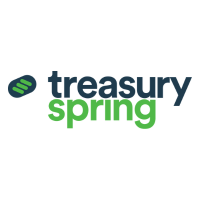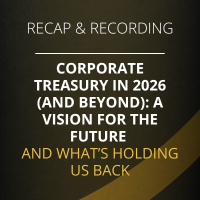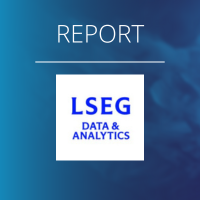Data and headlines barely shifted the needle, and traders, investors, and treasurers could quite accurately forecast and achieve expected borrowing rates and returns across most core currencies. Now however, quite the opposite is true, with widespread disagreement among strategists, traders and even Central Bankers as to what the ideal future path of interest rates should look like, let alone what it will actually look like. So how should treasurers, those custodians of a company’s capital and planners of a business’s budget think about a world of much more volatile interest rates?
Terming out your cash to achieve a smoothed, blended return, while keeping enough cash available for business as usual and, of course, adhering to your treasury policy, should be the target for treasurers. It’s standard practice for borrowing, and the same factors apply. We only have to look back over 2024 to see how.
For traders, volatility is good. As a rates speculator, daily movements in interest rate expectations, jumping from one piece of data or news to the next, allows you to make money if you get on the right side of the trade. Of course, get on the wrong side and you lose money. Ultimately, the difference between a good trader (or, a cynic might say, a lucky trader) and a bad trader is being on the right side more often than the wrong side.
We saw lots of volatility in 2024. We don’t have to look much further than Central Banks to find more of it than most treasurers should want. At the end of 2023, the range of the Fed members’ expectations for the Fed Funds Rate was 3.9%-5.4% – that’s six ‘regular’ rate cuts’ difference between the highest and lowest! Markets were pricing in 150bps of cuts over the year, with a first cut in March. We had to wait until September as it turned out.
Looking ahead to December 2025, and, as of September 2024, the voting members once again varied their views with a 1.5% range. For 2025, the market expectation was for further cuts to come, but how many and how soon was once again producing a wide range of views, with some even considering the possibility of a rate rise before the end of the year.
Not surprising, given the possible volatility on the cards in 2025. None are so obvious as the uncertainty surrounding the return of Donald Trump as US President. How many of his policies will he be able to enact and how soon into his tenure? Will they all be as harsh as he has said they will be? And how will other countries react to any sanctions such policies will place on them?
The ECB and the Bank of England are also on a dovish path, but, again, predicting how many and when is far from an exact science.
Historically, when rates come down, they come down quicker than they went up, and they stay at peaks for shorter periods of time than they stay at lows. So as a treasurer, trying to pick those tops is a dangerous game and, quite often, if you don’t move quickly, it’s gone.

Source: Board of Governors of the Federal Reserve System (US), Federal Funds Effective Rate [FEDFUNDS], retrieved from FRED, Federal Reserve Bank of St. Louis; https://fred.stlouisfed.org/series/FEDFUNDS, December 4, 2024.
Looking at these risks, as a treasurer looking at borrowing, while you can try and find a ‘good day’ to do your deal and try to achieve a marginally lower rate than the previous week, or perhaps month if you have that luxury, your first aim is to get a successful transaction, your second aim is to smooth your maturity profile to reduce any future refinancing risk, and then you aim to achieve the lowest blended cost of funding you can. The latter two come with regularly spaced deals, and, if executed correctly, allow you to deliver pretty accurate forecasts to your board of future interest costs, locking in rates, and reducing risks due to market volatility.
On the other side, placing your carefully raised cash, as a treasurer, you presumably equally want to remove that risk of market volatility affecting your interest rates, locking in rates, and reducing market volatility risk – again allowing you to deliver pretty accurate forecasts to your board of future interest income. (Assuming you’ve got a good finance team to give you accurate cash flow forecasting of course).
Yet many treasurers stick to rolling their cash overnight, taking whatever rate the market is paying that day, moving up or down at the whims of traders with very different aims for their financial years. Traders spend hours poring over charts, analysing the output of models, and considering the effects of varying factors on rates before making their trades. While many treasurers I know are always keen to learn and consider different approaches and opinions, one thing I know they don’t have is much time; especially not the sort of time traders spend considering their trades before placing them. So it feels like an unfair advantage if treasurers are trying to take on traders at their own game.
Traders don’t always get it right, but they do it enough times that, hopefully, the profits outweigh the losses. The Federal Reserve and other central bankers, as highlighted above, also get it wrong, with almost infinite access to information. Ultimately, it’s a brave treasurer who believes they can call it right more often.
So why not approach your cash asset management in the same way you do your liability management? Accept predicting rates is near enough impossible and term out your cash where possible with a range of maturities, producing a smoothed curve of maturities and a much less volatile level of interest income. Potentially also diversifying the institutions your cash is placed with too.
TreasurySpring allows you to do just that. With options to invest your cash for tenors from one week to one year, you can smooth that cash profile and average out your returns, removing the volatility of exposing yourself to overnight rates and, for all intents and purposes, taking a step back from the dog eat dog world of competing with traders whose sole focus is making money.
Have a look at your cash pool. How could you structure it to look more like your debt maturity profile? Could using TreasurySpring’s portal to place your cash across maturities to achieve that, make it easier than you may have considered it to be previously? We believe so, and would be happy to show you just how easy it can be. If it sounds of interest (and, to be frank, it should!) please take a look and get in touch












